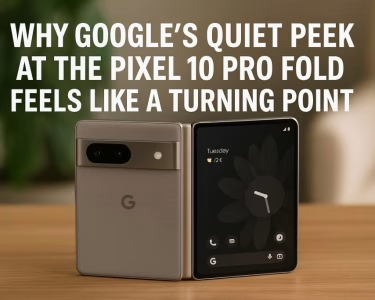In an age where data is the new oil, we’re pushing the boundaries of how and where data is processed. From the cloud to the edge — and now, even inside tiny sensors — machine learning is shrinking in size and growing in power. Enter TinyML: the science of running machine learning models on microcontrollers — those low-power chips you’ll find in everything from a smartwatch to a smart toaster. And when paired with quantum sensors, the future starts to look like something straight out of a sci-fi movie.
Let’s unpack how TinyML works, why it’s exploding in popularity, and how quantum sensors are quietly setting the stage for a massive leap forward in intelligent edge computing.
What is TinyML?
TinyML stands for Tiny Machine Learning — a subfield of ML focused on deploying models directly on microcontrollers and edge devices with limited power, memory, and compute resources. We’re talking kilobytes of RAM, milliwatts of power, and real-time responses — no internet needed.
It’s like squeezing the brain of an AI into the size of a coin and planting it wherever decisions need to happen instantly.
Why it matters:
- Latency-free decisions: No round trip to the cloud.
- Energy efficient: Ideal for battery-powered devices.
- Privacy-friendly: Data is processed on-device, never shared.
Quantum Sensors Meet TinyML: Why This Combo Matters
Quantum sensors are the ultra-sensitive cousins of classical sensors. Instead of measuring changes through traditional electronics, they leverage quantum mechanics — like superposition and entanglement — to detect incredibly tiny variations in magnetic fields, gravity, time, and more.
When you combine that with TinyML, you get smart, local processing of high-fidelity data that no classical sensor could even detect.
Real-World Example:
- A quantum magnetic sensor used in brain-scanning helmets could be paired with a TinyML model to detect seizure patterns in real time — without needing a hospital setup.
- In precision agriculture, quantum gravity sensors could map underground water or root systems, and TinyML could process that data on-site to optimize irrigation — no cloud or human in the loop.
How Does TinyML Work?
Running ML on a microcontroller isn’t just about shrinking the model. It’s about designing smarter models, efficient feature extraction, and clever deployment.
Here’s how the pipeline typically looks:
- Data Collection: From sensors (like accelerometers, audio, temperature).
- Model Training: Usually done on a powerful machine (not on the microcontroller).
- Model Optimization: Tools like TensorFlow Lite and Edge Impulse quantize and compress the model.
- Deployment: The optimized model is flashed onto the microcontroller.
- Inference on the Edge: Real-time predictions happen locally.
Practical Use Cases of TinyML
1. Smart Wearables
Your fitness band predicting fatigue? That’s TinyML. Processing your heart rate, skin temperature, and motion patterns in real-time.
2. Wildlife Monitoring
TinyML-enabled sound detectors can distinguish between bird species in the Amazon or alert forest rangers about poaching gunshots without needing cellular connectivity.
3. Industrial Predictive Maintenance
Machines can detect early signs of failure by monitoring vibrations or noise using embedded ML models — reducing downtime and saving costs.
Challenges (and Why They’re Worth Solving)
Yes, running AI on such tiny devices is hard. Limited memory, restricted compute, and energy constraints mean developers must be very intentional.
But with tools like Edge Impulse, TensorFlow Lite for Microcontrollers, and Arduino Nano 33 BLE Sense, we’re already seeing breakthroughs.
The future is distributed — and TinyML plus quantum sensors may just be the perfect match for smarter, faster, privacy-respecting tech.
Final Thoughts: A Tiny Future With Huge Potential
We’re heading toward a world where everything becomes intelligent, even the tiniest of devices. When you add quantum-level precision and TinyML intelligence, we’re no longer just building smart gadgets — we’re building a truly perceptive world.
Whether it’s detecting early signs of disease, helping farmers feed the planet, or monitoring Earth’s most delicate systems, the merger of quantum sensing and edge AI is quietly transforming how we understand and interact with the world.





